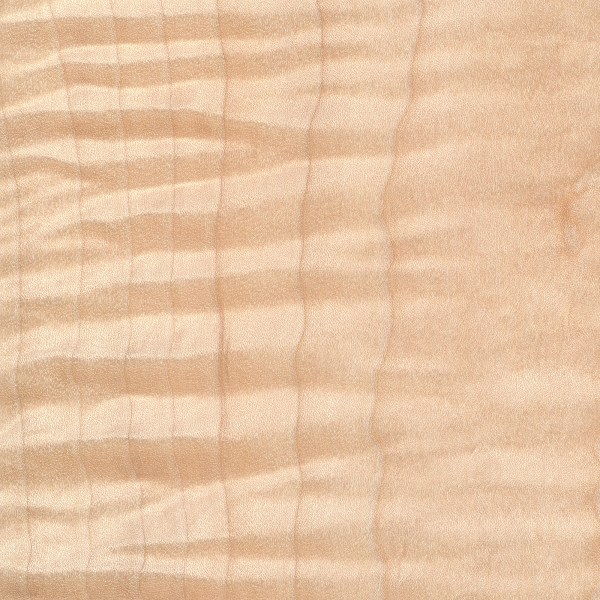Curly Maple
Curly Maple is not actually a species, but simply a description of a figure in the grain—it occurs most often in soft maples, but is also seen in hard maples. It is so called because the ripples in the grain pattern create a three dimensional effect that appears as if the grain has “curled” along the length of the board. Other names for this phenomenon are: tiger maple, fiddleback maple, (in reference to curly maple’s historic use for the backs and sides of violins), or flamed maple. Unlike quilted maple, curly maple is most pronounced when the board is quartersawn, and the curls usually become much less pronounced or absent in flatsawn boards. Hence, on wide boards where the grain tends to be close to vertical (quartersawn) near the edges and horizontal (flatsawn) in the center, the curly pattern will be most evident on the edges of the board, with the figure diminishing in the center. It is not completely clear what environmental conditions (if any) cause this phenomenon, but there are different grades of curly maple, which greatly affect its price. Ideally, the criteria for determining value is based upon: color (both uniformity and lightness—whiter is preferred), frequency of the curls (tight, closely-spaced curls are preferred), and intensity (more depth is preferred). Prices can range from just slightly more expensive than regular soft maple for lower grades of curly maple, to triple, quadruple, or higher for prices of the highest grades. But in general, higher grades of curly maple tend to be less expensive than quilted maple, and offer an economical solution for a “figured” hardwood.



